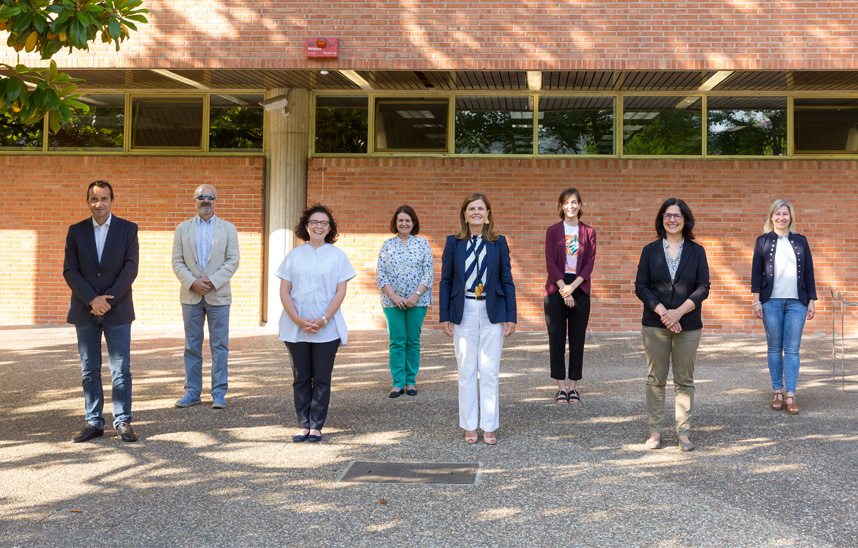How to cope with heat in the home? 48% of households cannot control the temperature and 14% do not ventilate at night, according to a study.
Volunteers are sought to answer a survey of a project of research that assesses the risk of overheating and the adaptation of Spanish homes to global warming.

FotoManuelCastells/The ClimateReady study is led by members of group of research SAVIArquitectura of the University of Navarra and researchers from the University of Seville.
16 | 06 | 2022
The first results of a study by the School of Architecture of the University, at partnership with the University of Seville, reveal that 48% of users cannot control the temperature in summer and 44% of users living in Seville have these difficulties even if they have air conditioning in their homes. Likewise, 14% never ventilate at night, due to noise, insecurity or insects.
In order to expand this research, the researcher team is asking residents in Pamplona and Seville to respond to the questionnaire. this form goal with the aim of collecting more data. For each registered response, €0.50 will be donated to the NGOs CEAR (Navarra and Seville) and TANTAKA, for the improvement of housing for vulnerable people.
The study indicates that 58% consider that they do not have a cool space in their homes, and 28% do not have a thermometer or thermostat to measure the temperature inside their homes. In addition, 8% make very little use of shading systems.
Similarly, the study points out that those dwellings with the highest risk of overheating are those located under the roof, and those with ventilation difficulties such as those with only one orientation or those facing busy streets, and those with large windows.
After analysing these initial results, a brief guide has been published with eight measures core topic to combat the heat in summer, including knowing the orientation of the home to know which windows should be protected from solar radiation and when and how to ventilate. Another of the measures focuses on using a thermometer to find out which rooms are the hottest and which are most at risk of overheating (>26ºC); and looking for cooler rooms on very hot days, either because they face north or north-west or a cooler space, or because they have smaller windows.
The study ClimateReady. Prepared for the climate. assessment of the Adaptation of Spanish dwellings to Warmer Conditions and Heat Waves evaluates the adaptation of Spanish dwellings to global warming, reducing the risks of overheating and/or with the minimum demand for air conditioning. It is led by members of group of research SAVIArquitectura, School of Architecture of the University of Navarra, and researchers from the University of Seville. It is also funded by the State Agency of research of the Ministry of Science and Innovation,
8 measures core topic to combat overheating of homes during summer and heatwaves
- Use a thermometer to find out which are the coolest and hottest temperatures and the highest risk (>26ºC). Also monitor the temperature outside, which you can see directly on your mobile phone, to know what action to take.
- Know the orientation of the house. If you do not know this, you can use Google Maps or download a compass to your mobile phone. This allows you to find out which windows need to be protected from solar radiation.
- Leave the blinds down whenever there is no one inside the house.
- If the house does not have solar shading systems, use white curtains or reflective fabrics facing outwards. If possible, invest in awnings or venetian blinds.
- Do not ventilate when the outside temperature is higher than the inside temperature and above 26ºC.
- Ventilate between windows on one facade and the opposite facade, open windows to cool, shaded areas such as courtyards or green spaces. Ventilate especially at night, and add, if required, security features against intruders and mosquito nets.
- On very hot days, look for a cooler room, either because of its north or north-west orientation or because it has smaller windows or a cooler space. Also, look for shady places with greenery, swimming pools, or places with air conditioning in the vicinity. If air conditioning is used, ensure that windows and doors are tightly closed.
- Wear lighter, lighter, breathable and loose-fitting clothing, drink plenty of fluids, eat cold food, shower more often, avoid using heat-producing appliances and switch off heat-producing appliances such as computers that are on standby.




